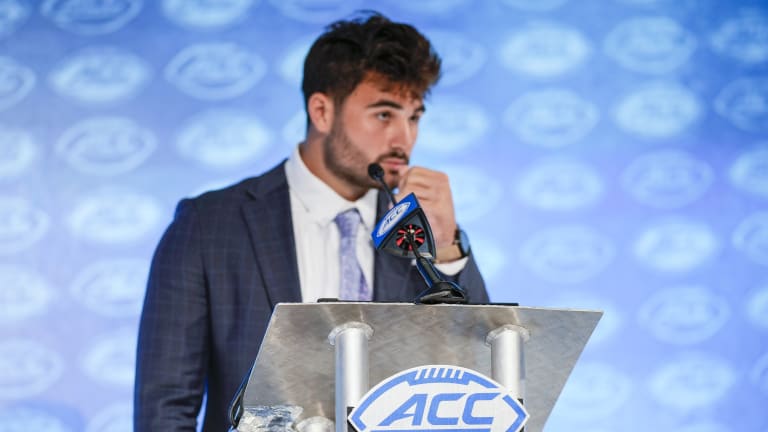
A Jersey Guy: Are ACC and Pac-10 ready to dance?
Everybody is talking, which is good. They are also talking and thinking "outside the box'', which is even better.
In fact, it is so good that it may be the only solution the embattled Pac-10 (that's what they will become) and Atlantic Coast Conference have to save their leagues.
The key to this movement is called a federated arrangement, where conferences are members in selected sports.
It has never happened at the Power 5 level in football and in most circumstances wouldn't be considered now.
But these are strange times.
"Everything is on the table,'' said sources in the Pac-12, Big 12 and ACC.
The latest movements appear to have solidified the Big 10 with its two members, USC and UCLA, into a 16 team mega conference.
On Monday, SEC commissioner Greg Sankey said his conference was fine with its ready list of 18, which will include Texas and Oklahoma.
Notre Dame is working on a deal with NBC to remain independent and the Big 12 appears (for now) to be content with its four new members of UCF, Houston, Cincinnati and BYU to stabilize at 12.
Which focuses on the two leagues scratching their heads and saying, "What about us?
In the middle of this is ESPN, which has the ACC and is talking to the Pac-10 about finding a way to put the ACC network on the West Coast to replace the doomed money-losing Pac-12 network.
The plan, according to one source who has dealt with ESPN as well as the ACC is maximize exposure, which will lead to bigger profits.
Not likely and nearly impossible if you are dealing with a 24 team super sized conference from coast to coast.
In football only, it could work with the following parameters:
Each league retaining its identity by playing only 'league'' games against each other, cross over games could be added in the "non'-conference'' category.
Each league plays its schedule and crows a "division'' champion, with the two division camps, Atlantic-Pacific facing off in Las Vegas or Charlotte in alternating years for a spot in a newly expanded 12-team college football playoff system.
The ACC is gambling that such former powers as Miami and FSU reach the Clemson-elite status, which would give the conference a solid group of Top 20 contenders each year.
If it needed any prodding, long time ACC observers could ponder to a potential federated football league between the Big East and ACC 30 years ago.
Former Big East Commissioner Mike Tranghese and former ACC commissioner Gene Corrigan worked out a plan that would add Boston College, Pittsburgh, Syracuse and Miami as football only members.
The ACC membership turned it down, stating that it wanted only full time members.
One can only imagine of what an ACC with Miami AND Florida State, both at the top of their powers, would have done for the ACC.
The ACC also should be aware of the clock moving quicker than expected. Although there were indications that the Big 12 would stand pat, reports on Tuesday suggested that a potential Pac-12-Big 12 Super Conference (22 teams) was being discussed.
The Pac-10 is hoping that Washington and Oregon remain competitive and that Stanford revives itself and joins other teams such as Utah and Arizona State.
Any merger of those three conferences would provide some security.
It won't be the Big Ten or SEC, but it would deserve a seat at the main table.